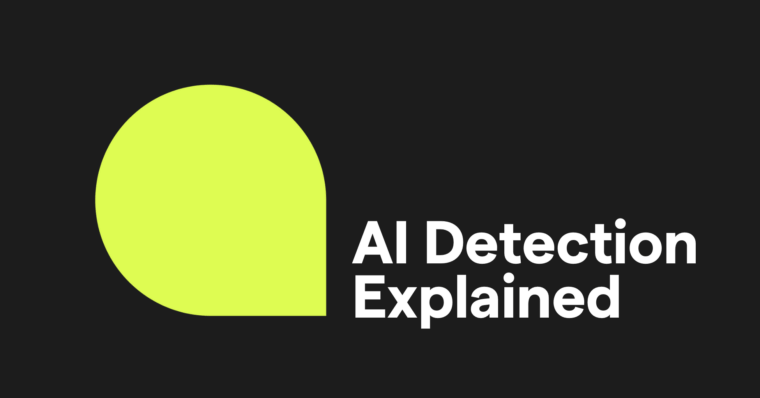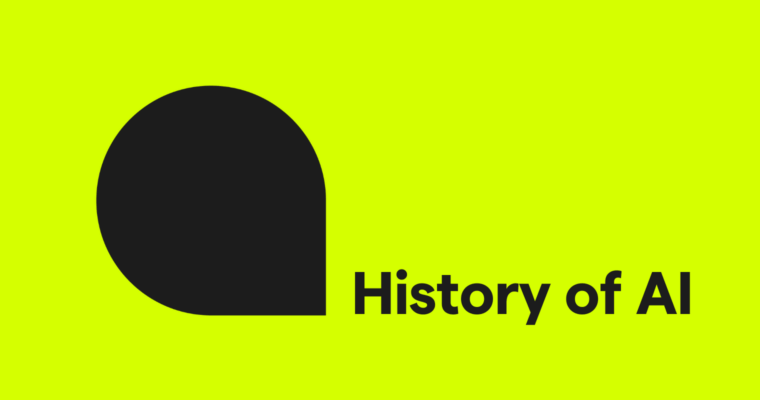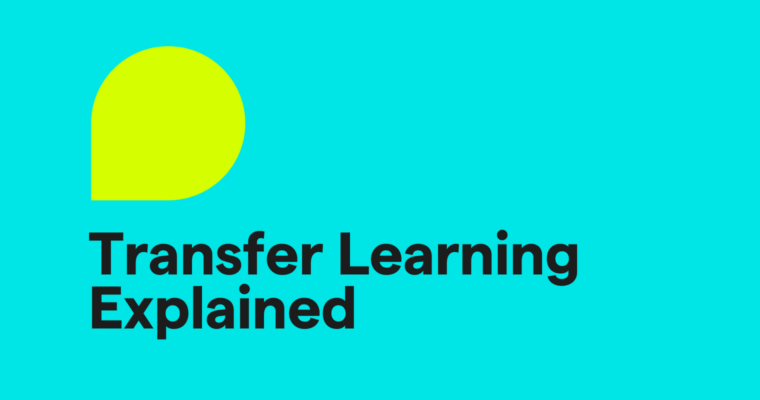
The evolution of AI language models has been remarkable, with each iteration bringing significant improvements. GPT-3 and GPT-4 share the same foundational frameworks, both undergoing extensive pre-training on vast datasets and fine-tuning to reduce harmful, incorrect, or undesirable responses. However, dataset size and processing power differences lead to major distinctions in their capabilities.
This article delves into the advancements and differences between GPT-3 and GPT-4, highlighting how these models have evolved to offer enhanced performance and versatility.
A quick recap of GPT-3 and GPT-4
Before we jump into the key differences between GPT-3 and GPT-4, let’s take a quick look at how these models came about.
GPT-3
GPT-3, released in June 2020, is the third version of the GPT series developed by OpenAI. It has 175 billion parameters and was pre-trained on over 1 trillion words from a diverse range of internet sources, making it one of the most powerful language models at the time of its release. GPT-3 can perform a wide array of tasks, from code generation to language translation, with minimal specific training.
GPT-4
GPT-4, released in March 2023, builds upon the foundation laid by GPT-3 with significant enhancements. It introduces multimodal capabilities, allowing it to process both text and images and has a longer context window, handling up to 128,000 tokens in its Turbo variant. While the exact number of parameters for GPT-4 remains undisclosed, it is presumed to be significantly higher than GPT-3, enabling it to solve more complex problems with greater accuracy and efficiency. In May 2024, OpenAI introduced GPT-4o, its latest model, further advancing the capabilities of the GPT series.
Differences between GPT-3 and GPT-4
Key differences between GPT-3 and GPT-4 highlight significant advancements in AI technology. These advancements can be best understood by examining various factors, such as model size, performance, capabilities, biases, and pricing.
Model size
AI models are often measured by their size. This size is determined by the quantity of data used for pre-training and the number of parameters in the model architecture.
During the pre-training phase, the model processes and learns patterns from a massive corpus of text data. As mentioned earlier, GPT-3 was pre-trained on over 1 trillion words from websites and books. The size of GPT-4’s training data has not been disclosed yet, but it is presumed to be larger than GPT-3 due to the model’s improved capabilities.
The number of parameters refers to the model’s total values, or weights, that are updated during the training process to optimize its performance on language tasks. A higher number of parameters often means it’s a more complex model that can handle intricate tasks and generate nuanced text. GPT-3 has 175 billion parameters, while GPT-4 is rumored to have significantly more, possibly reaching trillions, though the exact count remains undisclosed.
However, it’s important to note that more parameters alone don’t necessarily translate to more powerful performance. Model size is one factor, but the quality of the training data, model architecture, and training procedures also significantly impact a model’s real-world capabilities.
Nonetheless, the substantial increase in training data and model parameters for GPT-4 represents a notable scale-up that has enhanced performance compared to GPT-3 across many benchmarks. And while we won’t have specific details about GPT-4o’s model size, it’s expected to be even more advanced than GPT-3 and GPT-4.
Performance
OpenAI tested GPT-4 on a number of benchmarks and found that it significantly outperformed GPT-3.5. These benchmarks included test scores for things like the bar exam and the SAT and assessments made specifically for machine learning models.
Let’s look at the factors driving better performance for GPT-4.
Higher levels of accuracy
GPT-4’s larger model means it can respond with greater accuracy than GPT-3. According to OpenAI, it scored 40 percent higher than GPT-3.5 on an accuracy evaluation. It’s also better at differentiating between truthful and incorrect statements.
Better understanding of context
Compared to GPT-3, GPT-4 has a larger context window. This is the threshold for the amount of information the model can process before losing context. That information is measured in tokens. When you enter a prompt, the model breaks it down into chunks of text called tokens to process it. GPT-4’s context window goes up to 128,000 tokens (if you’re using Turbo), while GPT-3.5 maxes out at 16,385 tokens.
Better understanding of nuance
GPT-4 surpasses GPT-3 in understanding emotions and individual communication styles, making it more accessible and capable of creating more authentic content. GPT-4o extends these capabilities even further. It can process text, sound, images, and videos, enabling it to understand and respond to a broader range of information. This makes interactions with computers more natural and intuitive for users.
Adaptability
GPT-4 is more adaptable than GPT-3. This quality, which OpenAI calls steerability, allows you to tweak the style of the model’s output. Previous GPT models were fine-tuned to generate responses in a particular voice and tone. GPT-4 gives you greater control by allowing you to define attributes like your desired tone, style, and level of specificity. You can provide custom response templates to tell GPT-4 how to respond to your prompts.
For example, a developer making an app powered by GPT-4 for law firms can instruct the model to “respond with a formal tone appropriate for legal documentation.” Or an individual user on ChatGPT (with GPT-4 selected) can ask the model for advice with the instruction to “respond like a supportive life coach who avoids harsh criticism.” GPT-4 will conform to these desired styles and give you better responses.
Capabilities and applications
Generally, GPT models are highly flexible and can power many use cases. What sets GPT-4 apart is its performance, adaptability, and image-upload capabilities. Here’s how those factors enable GPT-4 to outperform GPT-3 in common applications.
Multimodality
One of the most significant differences between GPT-3 and GPT-4 is multimodality. While GPT-3 is unimodal and can only process and generate text, GPT-4 introduced the ability to process both text and images. The latest model, GPT-4o, extends these multimodal capabilities even further:
- Input modalities: GPT-4o can accept input in text, audio, image, and video formats
- Output modalities: It can generate text, audio, and image outputs
GPT-4o’s audio capabilities are particularly advanced. It can process and respond to audio inputs with remarkable speed, generating responses in as little as 232 milliseconds, with an average response time of 320 milliseconds. For comparison, the average human response time in a conversation is around 200-300 milliseconds. This means GPT-4o can engage in audio conversations at a pace that closely mimics natural human speech, representing a significant step towards real-time conversations with AI tools.
Currently, the advanced multimodal features (e.g. using video as input) of GPT-4o are not widely available to the public. They are primarily available through selective collaborations and beta testing with a limited set of partners. Broader access is anticipated as OpenAI continues to refine and roll out these capabilities.
In addition to its multimodal capabilities, GPT-4 can perform tasks that GPT-3 cannot, such as:
- Extracting key data points and trends from a set of graphs or charts.
- Creating descriptions of images, including what makes them interesting, funny, or sad.
- Transcribing photos of text, such as handwritten letters or historical documents.
- Writing code for a basic website design by uploading a layout mockup.
- Providing more context on prompts beyond what can be conveyed through text alone.
Creating content
GPT-3 and GPT-4 can create original text-based content for personal communications, business documents, and creative endeavors. Not only is GPT-4 better at generating text in your specific style, but it also can maintain the coherence of its responses for longer. You can use these capabilities to help write full short stories, for example, or to efficiently generate a series of welcome emails for customers for a small business.
While GPT models have impressive content creation capabilities, exploring other AI writing tools, like Grammarly, is a good idea for finding the right fit. With Grammarly, you don’t have to jump between tabs to get AI-generated content. The Grammarly extension works in your web browser and in programs like Microsoft Word, so you can easily get content creation support inside the tools you already use. Navigate responsible AI use with Grammarly’s AI checker, trained to identify AI-generated text.
Assisting with code
While both GPT-3 and GPT-4 perform well at writing code, explaining code snippets, and suggesting improvements, GPT-4 exhibits superior performance in this domain. It operates with higher effectiveness and accuracy when handling coding tasks. Moreover, GPT-4 can complete longer coding tasks with greater ease.
Powering chatbots
GPT-3 and GPT-4 serve as the foundation for chatbots that engage with people in a natural, conversational way, such as ChatGPT. Since GPT-4 is better at understanding nuance, conversations with GPT-4 chatbots tend to feel more natural and genuine. It can respond with more sensitivity to emotions and better detect human subtleties like idioms, cultural references, and figures of speech.
GPT-4 also makes chatbots more accessible since it performs better than GPT-3.5 in various languages.
Supporting academic tasks
Educators can use GPT models to create custom quizzes, lesson plans, and educational materials. The models are also capable of reasoning, which allows them to explain complex topics like mathematical concepts and philosophical questions.
GPT-4 outperforms GPT-3 on more advanced applications. For example, while GPT-3.5 scored a 1 on the AP Calculus exam, GPT-4 scored a 4.
Assisting with research
You can use GPT models to learn about many subjects, explore new concepts, and get answers to common questions. However, there are limitations on how timely that information may be. GPT-3 was trained on large amounts of data but isn’t up-to-date. The knowledge cutoff for GPT-3.5 is January 2022. For GPT-4, the knowledge cutoff can vary from September 2021 to December 2023, depending on the version.
Summarizing existing content
Both GPT-3 and GPT-4 allow you to insert existing content into your prompt and generate a summary. You can tailor the summary to your specifications, like word count, formatting, or grade level. Since GPT-4 has a longer context window, you can use it to summarize longer pieces of text. You can also request that the summary meet more specific requirements, such as targeting a specific audience or even generating the text in another language.
Brainstorming ideas
GPT models can provide ideas for things like creative projects, events, and product names. They can also help you come up with ideas for solving complex problems. For example, they can offer ideas on how to use automation to streamline a time-consuming, complicated process. Because of its ability to grasp nuance, GPT-4 can provide a more tailored list of ideas than GPT-3. You can also add additional details to your brainstorming prompt by uploading images.
Bias and safety
Minimizing toxic responses is an ongoing issue for generative AI. GPT-4 is generally better than GPT-3 at preventing biased and discriminatory responses and recognizing problematic words in prompts. However, researchers have found that, compared to GPT-3, it is easier to trick GPT-4 into ignoring its guardrails and generating harmful responses. As it turns out, the steerability feature that makes it easier to customize GPT-4 to your needs also makes it easier to jailbreak the model.
Pricing
The latest version of GPT-3, GPT-3.5, is available for free through ChatGPT. To access GPT-4, you need a ChatGPT Plus account, which starts at $20 per month. For developers, GPT-4o API access is about 50 percent cheaper than GPT-4 Turbo while also offering 5x higher rate limits.
Improved multilingual capabilities
Because they are trained on internet data, previous GPT models exhibited a bias toward languages that are more widely represented online. However, GPT-4 demonstrates enhanced performance across a broader range of languages compared to how GPT-3.5 performs in English. This includes better capabilities in languages such as Swahili and Latvian, which have a more limited online presence than English and French. GPT-4o continues this trend, showing even more significant improvements in non-English languages.
Conclusion
The evolution of GPT models from GPT-3 to GPT4, and now GPT-4o, marks significant leaps in AI language processing. GPT-3 set a high bar with its ability to generate text, explain concepts, and write code. GPT-4 raised this bar by introducing image processing and enhanced language understanding. GPT-4o pushes boundaries further with audio and video processing, faster responses, improved multilingual capabilities, and cost-effectiveness.
These advancements expand AI’s potential across diverse applications, from creative tasks to complex problem-solving. As GPT models continue to evolve, they will offer increasingly sophisticated capabilities that lower the barrier to entry for fields like design, engineering, and data analysis. Some experts argue we’re likely to transition into roles where we manage our AI models, guiding, refining, and delegating rather than performing tasks from scratch.






